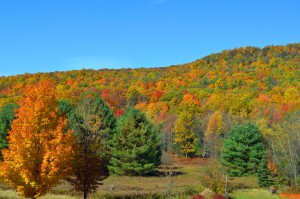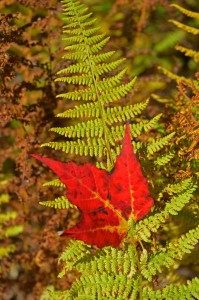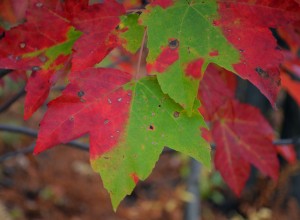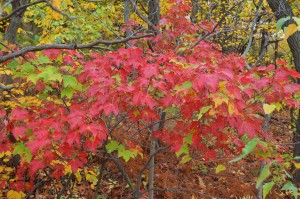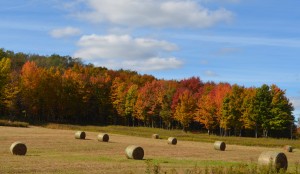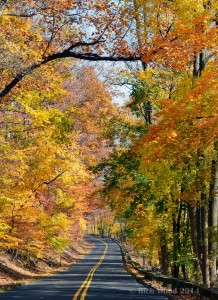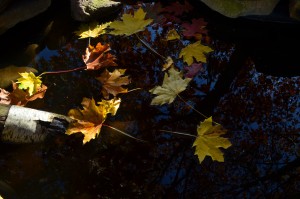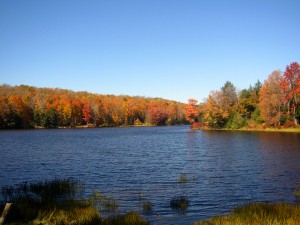 Don’t look now, but fall has arrived! As the days grow shorter, and cooler temperatures arrive, nature begins to make many changes to get ready for the upcoming dormant season. One of the most dramatic, and most beautiful, is the transformation of the color of trees. The turning of leaves from various shades of green, to a brilliant assortment of reds, yellows and oranges is a spectacular part of the autumn season. But where do these bright colors come from, and why does it happen? To answer these questions, we must first understand the basic function of leaves. Get ready, here comes your science lesson!
Don’t look now, but fall has arrived! As the days grow shorter, and cooler temperatures arrive, nature begins to make many changes to get ready for the upcoming dormant season. One of the most dramatic, and most beautiful, is the transformation of the color of trees. The turning of leaves from various shades of green, to a brilliant assortment of reds, yellows and oranges is a spectacular part of the autumn season. But where do these bright colors come from, and why does it happen? To answer these questions, we must first understand the basic function of leaves. Get ready, here comes your science lesson!
Leaves are a tree’s source of food production. Without sounding too scientific, it happens like this. As the roots of the plant take on water from the ground, the leaves collect carbon dioxide from the air. The trees use sunlight to take these two main ingredients (water and carbon dioxide) to produce oxygen and glucose. From a human’s standpoint, oxygen is kind of important, since we need it to breathe. You can thank a tree for this! The glucose, a kind of sugar, is the plant’s food, which allows it to grow big and strong. This whole process is called photosynthesis. A chemical called chlorophyll makes photosynthesis happen. Chlorophyll is what gives plants their green color. Do you follow me so far? Let’s bring it all together now.
As autumn arrives and the days grow shorter, there’s less sunlight for the trees to use, so they begin to “rest” and live off the food they’ve stored all summer, and photosynthesis pretty much stops. The green chlorophyll in the leaves begins to fade, and disappear, showing the tree’s “true colors.” So, these colors are actually in the leaves all summer, we just can’t see them since they’re covered up by the green chlorophyll! The remaining glucose (plant’s food) in the leaves turns color, like red, yellow or orange. In some species, like oaks, leaves simply turn brown from a waste product left in them, called tannin. To clarify, let’s compare it to a common food we eat, a banana. An unripe banana is green. The green color is chlorophyll. As the banana sits on our counter and ripens the green fades and it turns yellow, showing its true color. It’s the same process for our beautiful fall foliage displays.
We are fortunate here in Pennsylvania since we have some of the best displays of fall colors. Most of the Eastern U.S. is made up of deciduous forests-trees and shrubs that drop their leaves each year. These deciduous trees present some dazzling pageants of color each fall. The peak time to see these colors depends on where you live. In Pennsylvania, these changes usually start up north in mid to late September, and gradually move further south by mid to late October, and even into early November. I’ve noticed in our area over the past few years that our local colors tend to peak around the third week of October, depending on the weather. This year the colors may be less noticeable due to the very dry summer. Scientists believe that weather plays a large part of how spectacular the foliage display will be. Ideally, warm, sunny days combined with cool (not freezing) nights produce the best colors.
Specific tree species display particular colors. The most famous (and most photographed) are the Maples. Sugar maples display bright, red-orange colors, while Red maples show fiery crimson pigments. Hickories, Ash and Poplars exhibit shades of golden yellow and the Oaks are known to be somewhat duller in their deep scarlets and rich browns. I’m not biased however, I like them all! If I had to pick one season of the year that would be my favorite, it would definitely be autumn. The warm days and cold, crisp nights, fall bird migrations, harvest time, apple cider, Halloween and those leaves, those stunning, brilliant leaves, bursting with the chance to reveal their “True Colors!”
